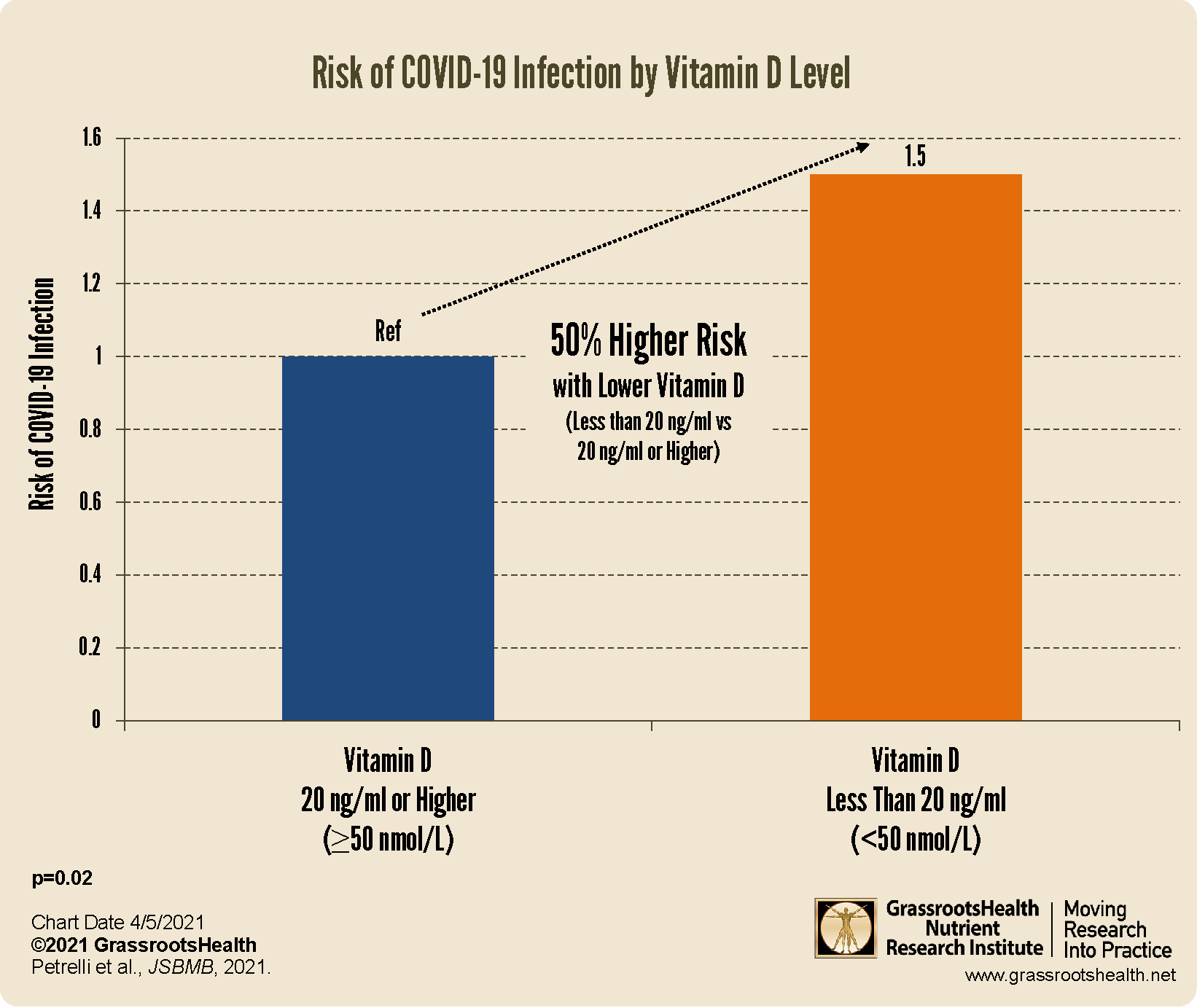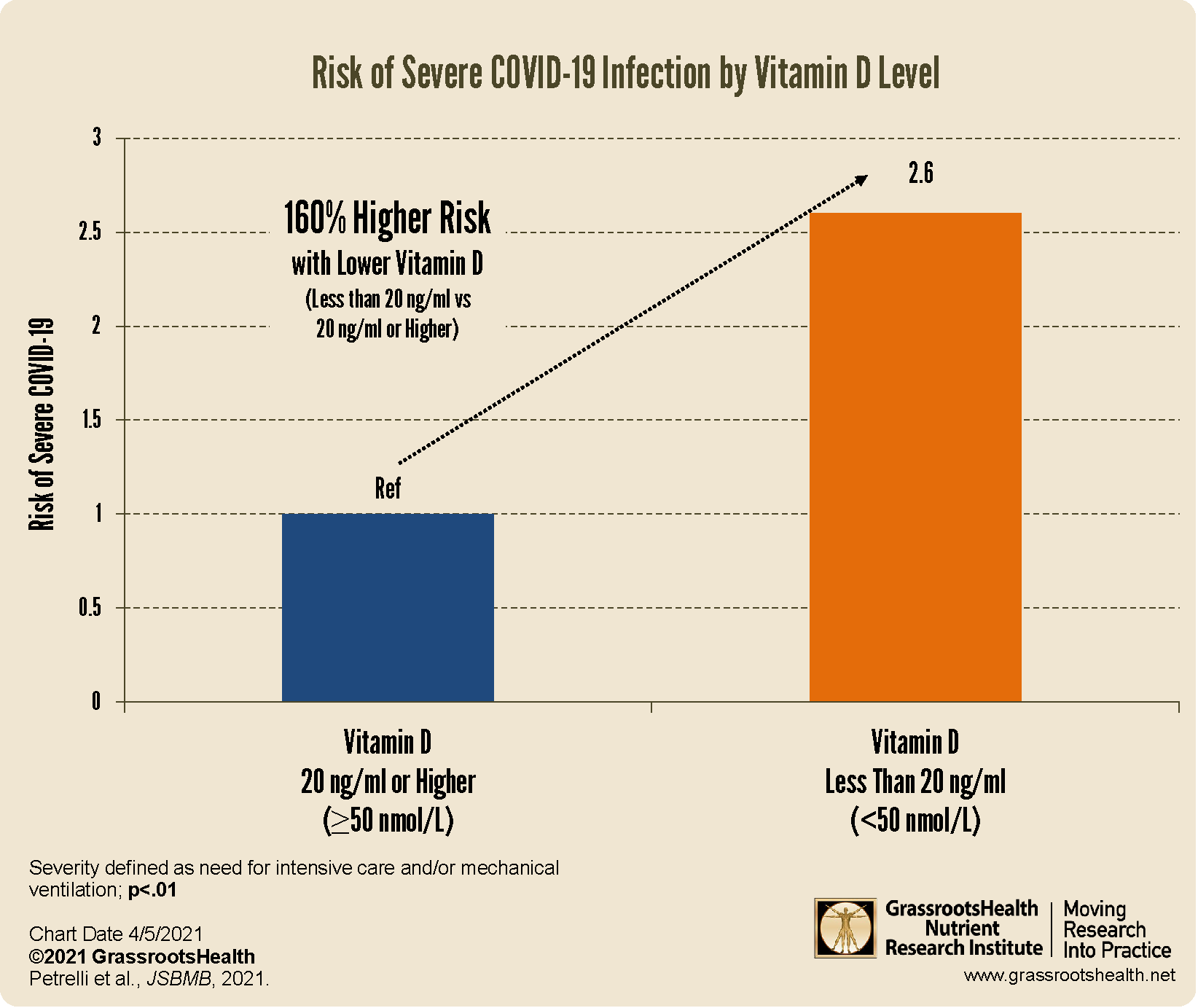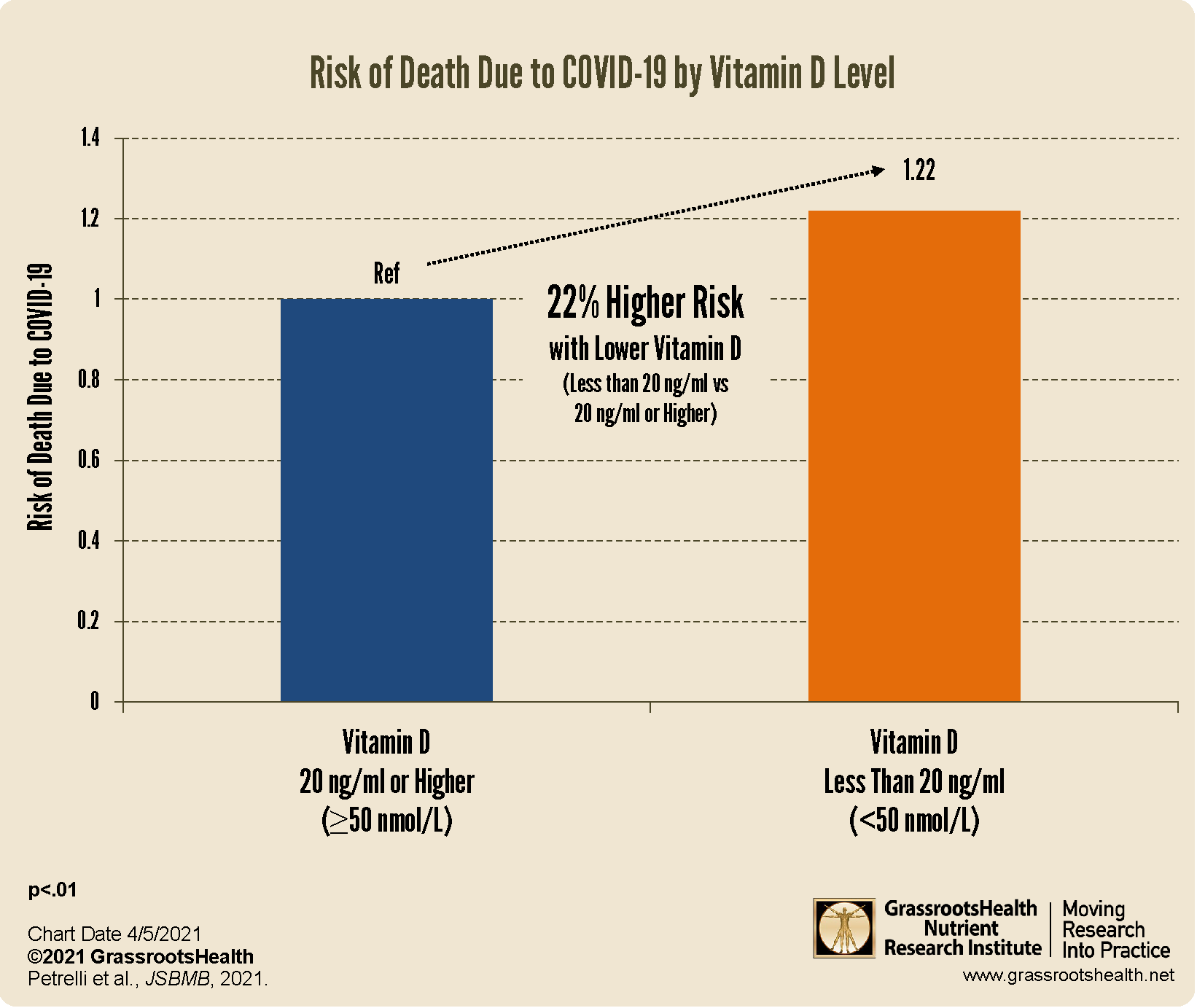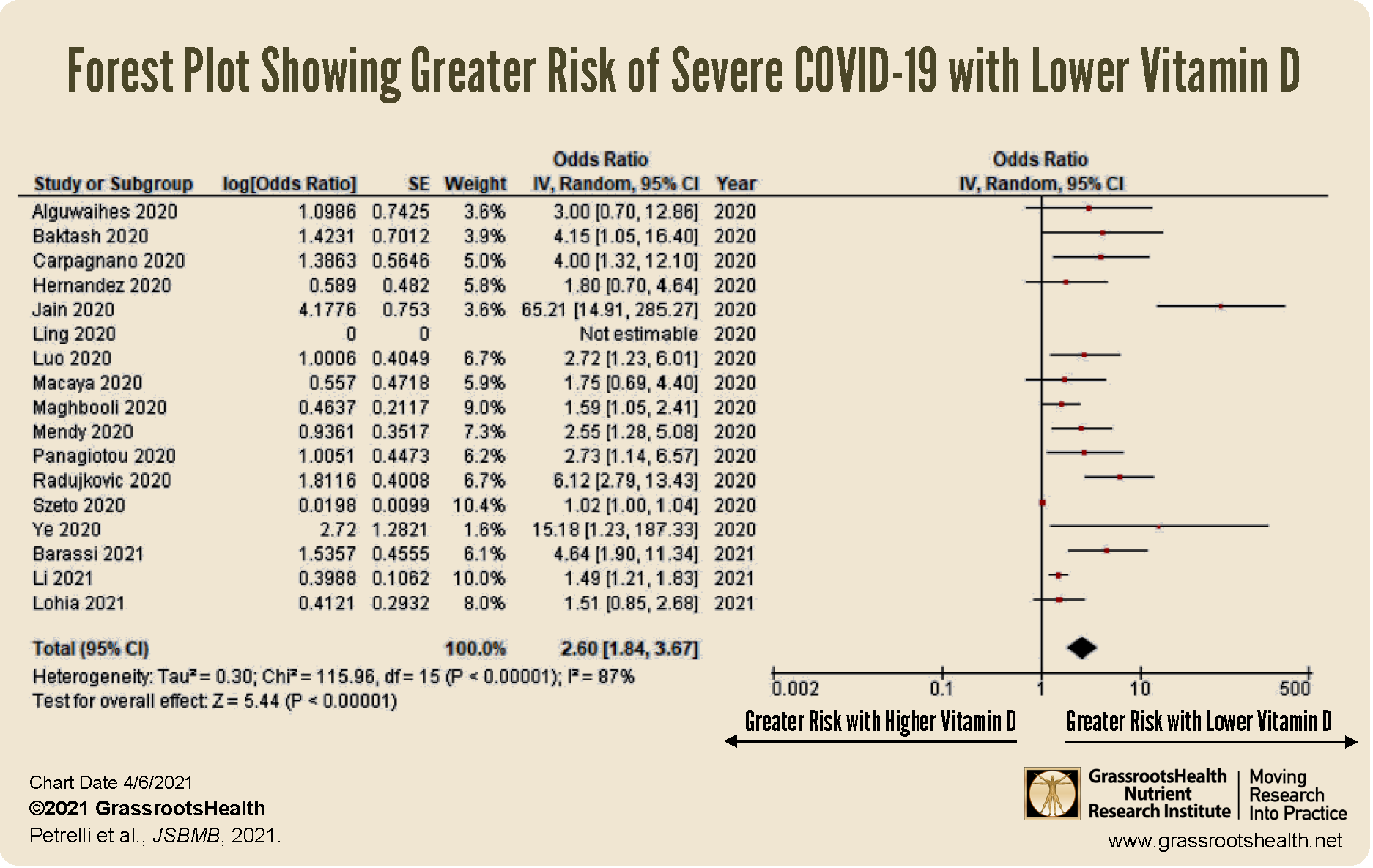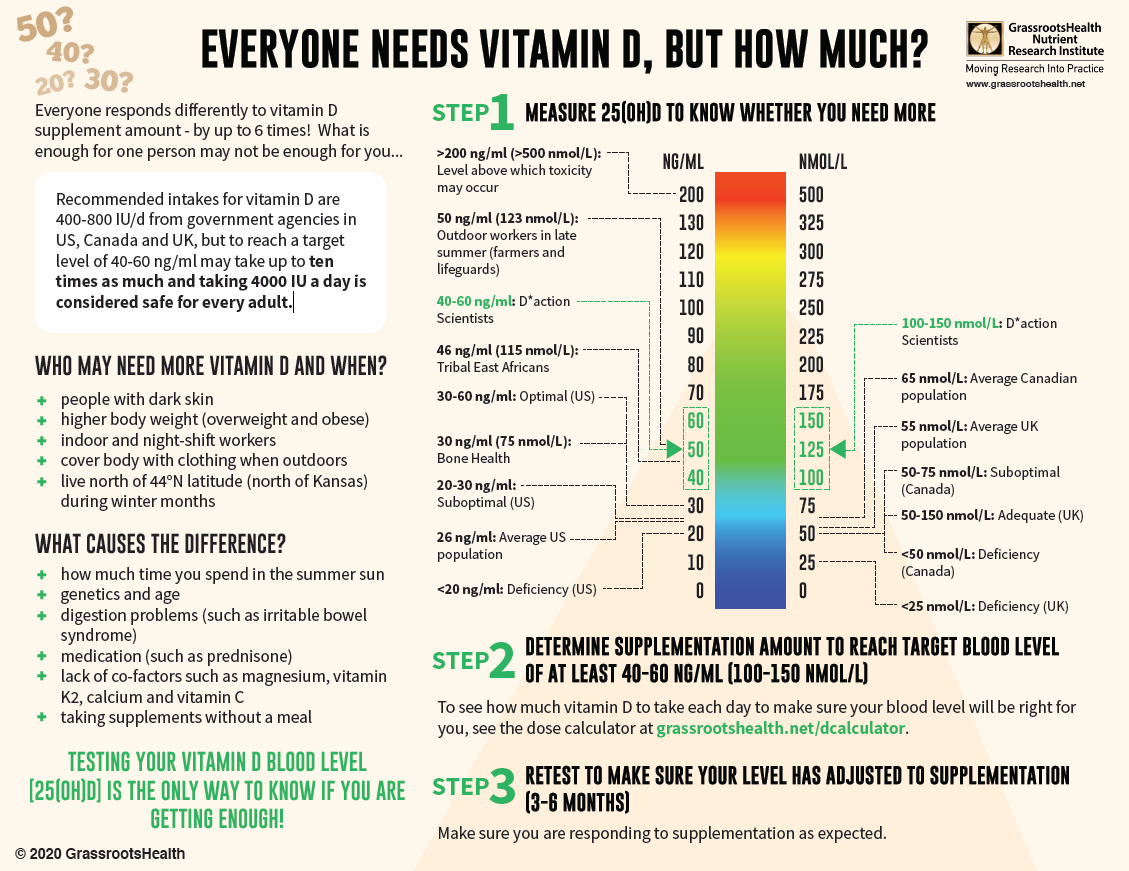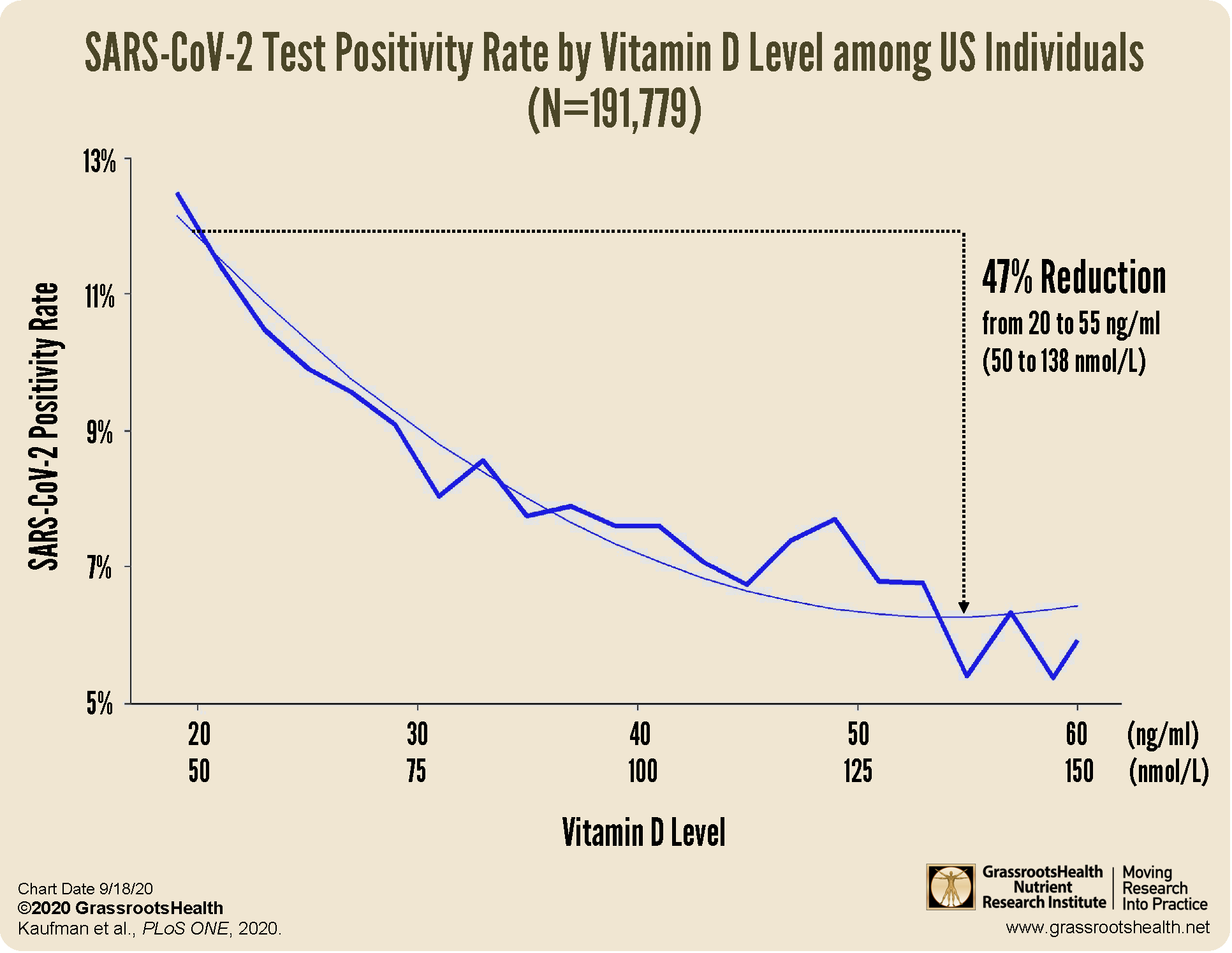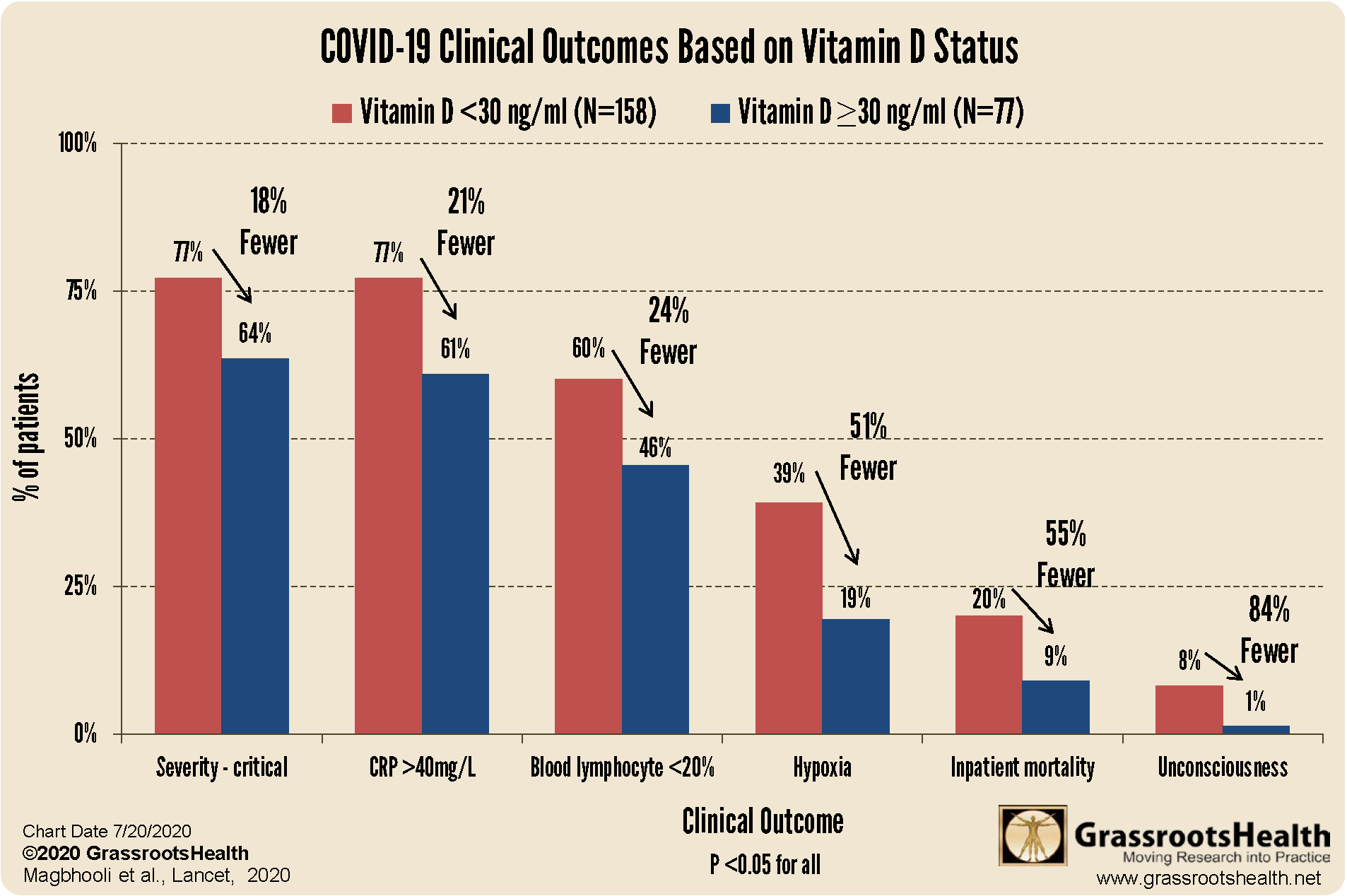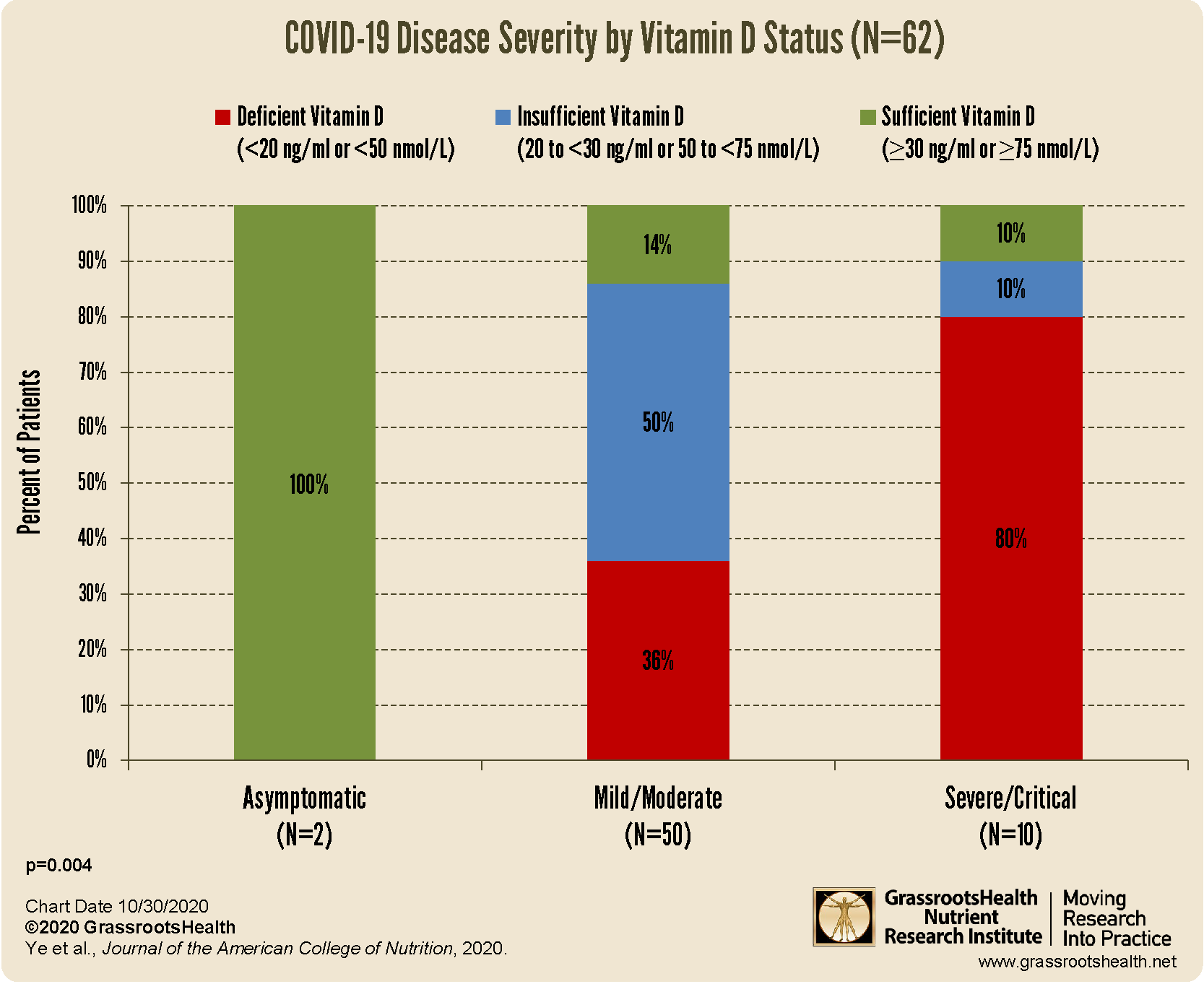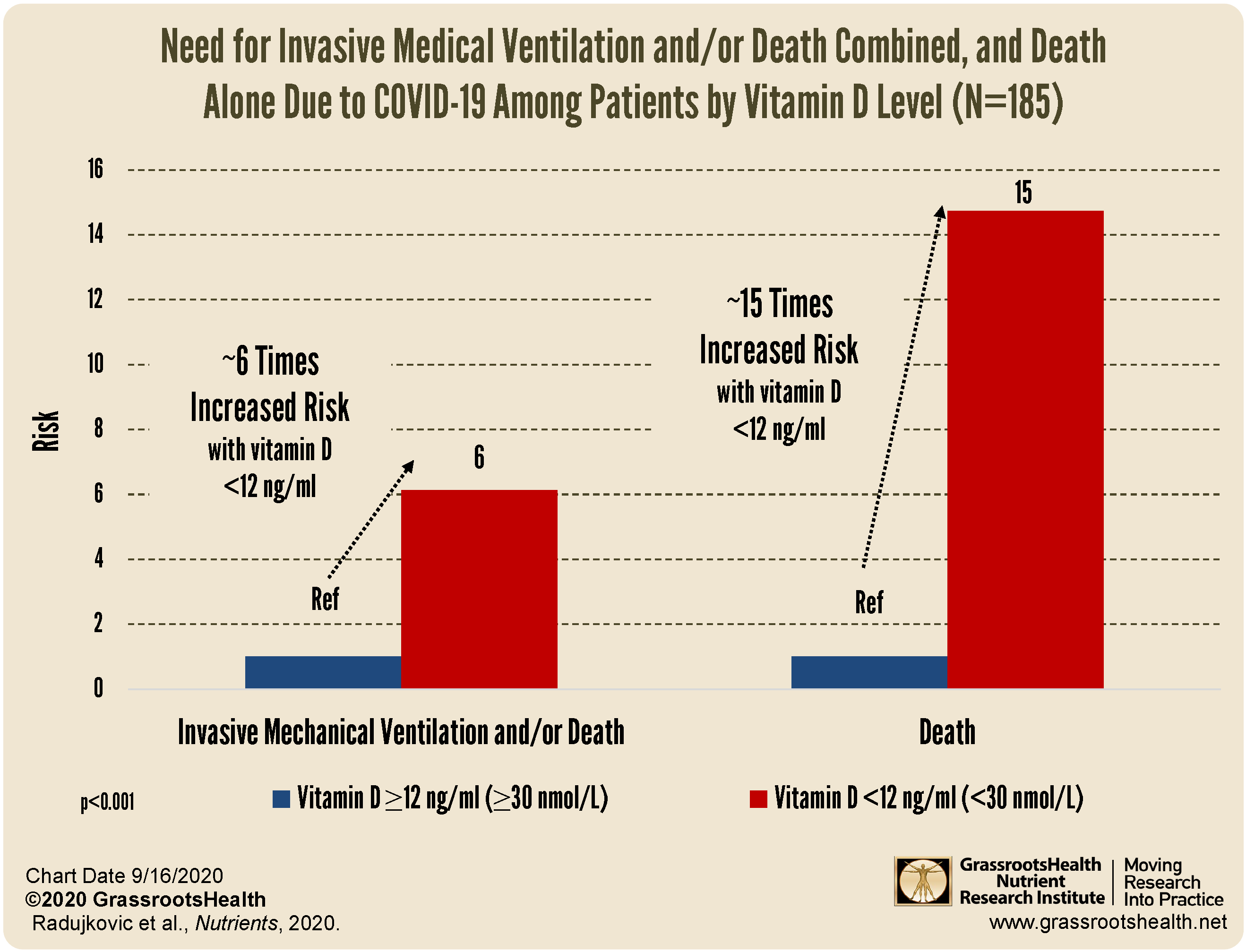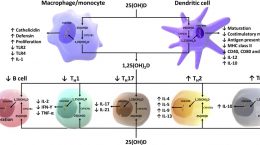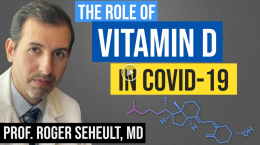Published on April 7, 2021
Meta-analysis of 43 studies supports therapeutic and prognostic role of vitamin D for COVID-19 infections
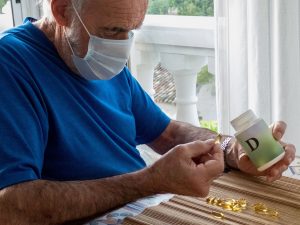 An extensive amount of research has now been published on the relationship between vitamin D and immune health, from demonstrating the physiological roles of vitamin D within the immune cells, tissues, and organs, to the observed relationship between vitamin D levels and disease outcomes. It is factual knowledge that the body needs a supply of vitamin D in order to effectively fight off certain infections and diseases. A new meta-analysis shows that this seems to be especially true in the case of COVID-19.
An extensive amount of research has now been published on the relationship between vitamin D and immune health, from demonstrating the physiological roles of vitamin D within the immune cells, tissues, and organs, to the observed relationship between vitamin D levels and disease outcomes. It is factual knowledge that the body needs a supply of vitamin D in order to effectively fight off certain infections and diseases. A new meta-analysis shows that this seems to be especially true in the case of COVID-19.
Meta-analysis of Vitamin D’s Association with COVID-19 Disease and Outcomes
A review by Petrelli et al. included 43 studies with data from a total of 612,601 COVID-19 patients that had been published from the beginning of the COVID-19 pandemic through January 31, 2021. All papers included data on vitamin D and COVID-19 disease risk, severity, and/or mortality. The primary outcome of the review was to see if there was a difference between COVID-19 infection risk among individuals with or without vitamin D deficiency (defined as vitamin D levels below 20 ng/ml or 50 nmol/L). Secondary outcomes of the review were severity and death due to COVID-19, as well as the therapeutic effect of vitamin D supplementation.
COVID-19 Infection Risk
Risk of COVID-19 infection was 50% higher among those whose vitamin D levels were below 20 ng/ml (50 nmol/L) compared to those whose levels were at least 20 ng/ml (P=.02).
COVID-19 Severity Risk
Risk of severe COVID-19, defined as the need for intensive care and/or mechanical ventilation, was 160% higher among those with vitamin D levels below 20 ng/ml (50 nmol/L) compared to those whose levels were 20 ng/ml or higher (P<.01).
COVID-19 Death Risk
Risk of death due to COVID-19 was 22% higher among those with vitamin D levels below 20 ng/ml (50 nmol/L) compared to those whose levels were 20 ng/ml or higher (P<.01).
Vitamin D Supplementation and Risk
Vitamin D supplementation of various doses reduced the risk of severe COVID-19 disease by 73% (P<.01) and death by 59% (P=.01).
Overall Risk of Severe COVID-19 Very Strongly Associated with Vitamin D
The combined set of studies that evaluated COVID-19 severity and vitamin D levels can be seen on the forest plot below.
The purpose of a forest plot is to help you “see the forest among the trees.” They are used often in a meta-analysis, such as this paper, to summarize the results from individual studies. The idea is to compare two categories for one outcome, in this case, highest vs. lowest vitamin D levels for risk of severe COVID-19 disease. The vertical line, labeled as 1, indicates that the risk of severe COVID-19 is the same for both categories. A relative risk less than 1.0 indicates lower risk with higher vitamin D levels and a relative risk above 1.0 indicates higher risk with lower vitamin D levels. In this plot, almost all of the points are to the right, showing a higher risk of severe COVID-19 disease with lower vitamin D levels. Each point also has an associated bar with it – this represents the 95% confidence interval used in statistics. In reality it means the point could be anywhere along that line. Finally the big diamond at the bottom is the aggregate risk for all of the studies, and represents the 160% increased risk of severe COVID-19 disease among those with lower vitamin D levels demonstrated by this review.
In Conclusion
Vitamin D plays essential anti-inflammatory and antiviral roles within the body, and a deficiency can lead to decreased immunity and a lacking immune response. This review solidifies the already demonstrated importance of maintaining healthy vitamin D levels, especially for immune response against COVID-19. The GrassrootsHealth panel of international vitamin D scientists recommends a vitamin D level between 40-60 ng/ml (100-150 nmol/L) – what is your vitamin D level?
Check Your Level of Vitamin D
With almost 90% of the general population having vitamin D levels below the recommended 40-60 ng/ml (100-150 nmol/L), it is obvious that most people need more vitamin D. While most of us cannot achieve a vitamin D level of 40-60 ng/ml from sun alone, either due to our lifestyle, where we live, or other circumstances, we can certainly reach those levels with the right amount of supplementation.
Below is a guide for how much you might need, and who may need more. Your levels can be tested safely at home – order your home test kit today.
By joining the GrassrootsHealth projects, you are not only contributing valuable information to our study, but you are also gaining knowledge about how you could improve your own health through measuring and tracking your nutrient status, and educating yourself on how to improve it. Do you know what your status of vitamin D, omega-3s, and other essential nutrients is? Could your levels be improved? Test now to find out!
 We now have a NEW GIFTING SERVICE that allows you to quickly send ‘Gift Cards’ to friends, family and coworkers who you consider might need immediate access to testing, and to Claim the Joy of Your Health TODAY. Give the gift today!
We now have a NEW GIFTING SERVICE that allows you to quickly send ‘Gift Cards’ to friends, family and coworkers who you consider might need immediate access to testing, and to Claim the Joy of Your Health TODAY. Give the gift today!
What does the Research Say about Vitamin D & COVID-19?
It’s TIME to start saving lives! If you can help PREVENT the majority of the death, it’s time! What’s it costing you/us not to take action NOW?
There is much published research that supports a clear link between vitamin D and COVID-19 showing that higher vitamin D levels are related to:
a decreased risk of testing positive for COVID-19
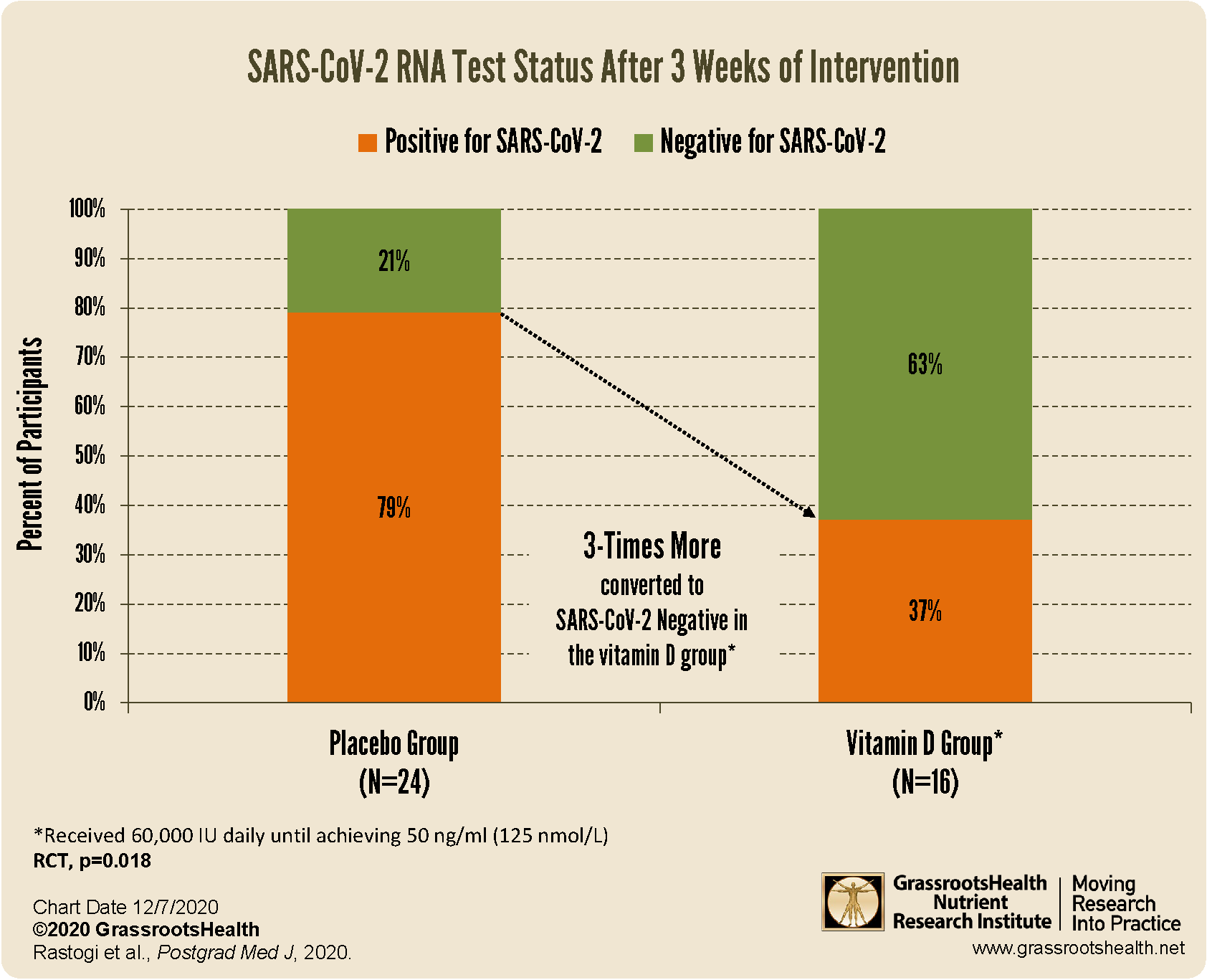 increased viral SARS-CoV-2 RNA clearance
increased viral SARS-CoV-2 RNA clearance
better clinical outcomes among patients with COVID-19
decreased risk of death due to COVID-19
Be sure to educate yourself on the benefits and importance of vitamin D for immune health, and take steps to ensure you and your loved ones are getting enough.
You can review all of the COVID-19 and immune health information we have shared on this page.


